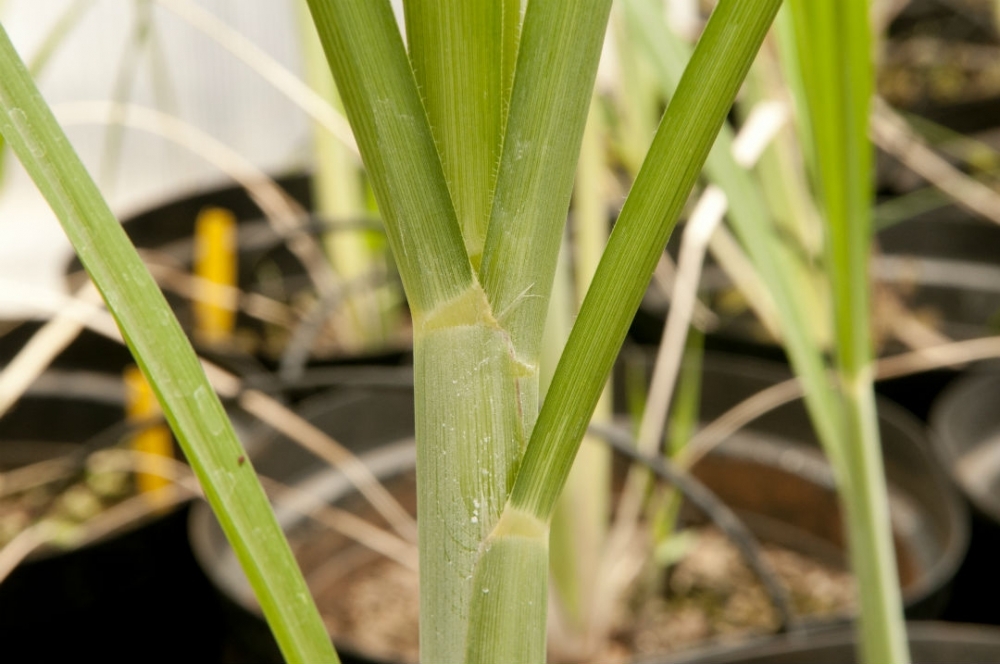

Collaborative study by Brazilian and Dutch researchers recommends use of bacterial inoculants (photo: Eduardo Cesar / Pesquisa FAPESP magazine)
Collaborative study by Brazilian and Dutch researchers recommends use of bacterial inoculants.
Collaborative study by Brazilian and Dutch researchers recommends use of bacterial inoculants.

Collaborative study by Brazilian and Dutch researchers recommends use of bacterial inoculants (photo: Eduardo Cesar / Pesquisa FAPESP magazine)
By Maria Fernanda Ziegler | Agência FAPESP – Interactions between the sugarcane root microbiome and bacteria that promote plant growth can make crop cultivation more efficient. In fertile soil, these interactions between plant microorganisms and bacteria produce even better results than the application of nitrogen fertilizer, which is widely used in sugarcane plantations and heavily contaminates the soil, rivers and groundwater.
This is the main finding to date of the research project ‘Harnessing the rhizosphere microbiome to enhance plant productivity’, as presented on April 5, 2017 at the Biobased Economy Workshop held in FAPESP’s auditorium in São Paulo, Brazil. The project is supported by the National Council for Scientific & Technological Development (CNPq) and the Netherlands Organization for Scientific Research (NWO).
During the event, Eiko Kuramae from the Netherlands Institute of Ecology and Adriana Silveira from the Agronomy Institute (IAC) in Brazil delivered a presentation showing the results of studies on the inoculation of sugarcane with plant growth-promoting bacteria.
“We found inoculation with bacteria to be more effective in fertile soil than the application of nitrogen fertilizer. The plant responded much more. In poor soil, with aluminum and a low pH, inoculation protected the plant, showing that, even in adverse conditions, it promoted growth,” said IAC’s Silveira, who is also a researcher for the FAPESP-funded Thematic Project “Nitrogen nutrition of sugarcane with fertilizers or diazotrophic bacteria”.
The researchers began with plants in pots, and the next step will consist of experiments in the field. “What we can say so far is that, in contrast to the recommendation for soybeans, which is to cease the use of nitrogen fertilizer completely and instead inoculate the crop with Rhizobium, the recommendation for sugarcane is to use bacterial inoculants but not to eliminate nitrogen fertilizer completely,” Silveira said.
Nitrogen fertilizer is used in large quantities for the production of ethanol from sugarcane. According to estimates, sugarcane plantations account for 23% of all nitrogen fertilizer use in Brazil. It is the most expensive plant nutrient on the market and plays a major role in the environmental impact of biofuel production.
The use of nitrogen fertilizers entails the emission of nitrous oxide, a potent greenhouse gas, which contributes to the environmental cost of ethanol. Such use also causes intense leaching and contamination of the soil and groundwater.
Tomatoes with disease-resistant genes
Genes with resistance to begomovirus and tospovirus diseases, which affect plants and are found in tomatoes and sweet peppers, were also discussed at the Biobased Economy Workshop. Richard Kormelink from Wageningen University in The Netherlands and Renato Resende from the University of Brasília in Brazil presented advances in knowledge regarding the defense mechanisms of disease-resistant genes in plants.
Unlike other pathogens, these viruses cannot be combated using known agrochemical pesticides capable of directly eliminating viral infections.
“Approximately 20 plant viruses cause worldwide crop losses on the order of US$20 billion. Almost half (47%) of the new viruses responsible for infectious diseases cause problems in plants,” Kormelink said.
The researchers found that proteins associated with cell movement and the suppression of gene silencing affected the activation of Sw5 and Tsw, the only two resistance genes available for genetic improvement. In addition, they cloned and identified Ty1, the first gene with resistance to the tomato yellow leaf curl virus (TYLCV), a type of begomovirus.
“We want to understand how the virus breaks through the gene’s resistance,” Resende says. “To anticipate the problem, it’s what we call ‘pyramidizing’, when we take several resistance genes and put them in the same plant. Because it has several defense mechanisms, the resistance can become broader.”
Candeia and bisabolol
Another study presented to the workshop helped save Eremanthus erythropappus, a native tree known in Brazil by the common name ‘candeia’, from extinction. Scientists discovered that 250 metric tons of bisabolol could be extracted from the bark of 30,000 cubic meters of this tree, “which is equivalent to approximately 1,000 hectares of forest,” said Thierry Delatte from Wageningen University.
Bisabolol is an oil with anti-inflammatory, anti-fungal, anti-bacterial and wound-healing properties. It has a long history in the pharmaceutical industry. Commercial production currently depends entirely on candeia oil.
The researchers are studying the commercial feasibility of extracting bisabolol from Nectandra megapotamica, an ornamental plant whose common name is ‘canelinha’. They are also working on the genetic sequencing of candeia, developing a biotechnological process to produce bisabolol from a number of different species, and planting candeia trees on a farm.
The genetic part of the project is entirely in the hands of the Brazilian team. “Because of the Nagoya Protocol, which protects genetic resources and biodiversity, this part is all being done in Brazil by Brazilian researchers, led by my colleague Carlos Carollo from the Federal University of Mato Grosso do Sul,” Delatte said.
Republish
The Agency FAPESP licenses news via Creative Commons (CC-BY-NC-ND) so that they can be republished free of charge and in a simple way by other digital or printed vehicles. Agência FAPESP must be credited as the source of the content being republished and the name of the reporter (if any) must be attributed. Using the HMTL button below allows compliance with these rules, detailed in Digital Republishing Policy FAPESP.





